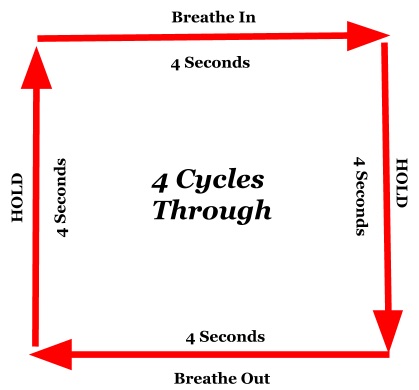
Descartes' first philosophy was called Meditations on First Philosophy. It was written in Latin and was later translated into French. Descartes demonstrated the existence of God in the treatise. Although the work was originally published in Latin in 1641 it wasn't until 1647 that it was made available in English. Descartes' ideas, despite their popularity, are generally unpopular today.
Rene Descartes, a French philosopher, wrote the first meditation. He had previously studied Aristotle's ideas but could not accept them. He wanted to create a better way to express his ideas. His efforts were futile. Meditations on First Philosophy was the result. This book is fascinating because it clearly explains Descartes’ ideas. The text also provides a wealth of information about the nature of the mind and its functions.

The Fifth Meditation on the nature of matter deals with the question of God. As in the previous parts of his work, the Meditator relies on his previous conclusions to prove the existence of God. He distinguishes between objects that are clear and those with a nature that is confused. He continues to ponder the definition of a mathematical entity. He then asks his self if existence can be defined as perfection. It doesn't hurt, but the answer is no.
Rene Descartes is the author of the third Meditation about First Philosophy. This book is one that is very popular. This volume was written entirely in French, with a female narrator. Mihali's introduction challenges Descartes' traditional interpretation. She argues that his arguments are not in fact circular and instead mean that the essence of matter is simply an extension of the mind, and that it is an extension of that essence.
Descartes's first Meditation on First Philosophy, is the first of a series. It is the 2nd of the 3 books on First Philosophy. It contains four sections: Selections of Objections, Replies, The Nature Of Man and Meditation on First Philosophy. This is a very popular text for philosophy students. This book is a valuable resource for researchers and academics. It also includes many citations to the original work.

The first Meditation on First Philosophy is a reflection on the relationship between the world and the universe. The second Meditation of First Philosophy is a meditation where you examine the meaning of words as well as the reality of this world. The meditation's first half focuses upon the idea of an "independent being" and the second part on the concept a "dual being". It is a powerful tool to understand reality and combines both perspectives.
FAQ
What causes weight loss as we age?
How do I know if my bodyweight changes?
When there is more muscle mass than fat, weight loss can occur. This means that the amount of calories consumed must exceed the amount of energy used daily. Low activity levels are the most common cause for weight loss. Other factors include stress, illness and pregnancy. If there is more body fat than muscle mass, then weight gain can occur. It happens when people eat more calories than they use during a given day. Common reasons include overeating, increased physical activity, and hormonal changes.
We eat less calories than we burn, which is the main reason our bodies lose weight. Exercise regularly increases your metabolism rate, which allows you to burn more calories every day. This doesn't necessarily mean we will lose weight. What matters is whether we are losing fat or building muscle. Weight loss is possible if you burn more calories than you consume. But, if we consume far more calories than what we burn, then we actually store them as fat.
As we age, our ability to move around is slower and we are less mobile. We also tend to eat less food than we did when we were younger. Also, we are more likely to gain weight. However, our muscle mass is more important than we realize and makes us appear larger.
It's not possible to measure how much weight your body has lost without weighing yourself every week. There are many ways you can measure your weight. There are many ways to measure your weight. You can check your waist, hips, thighs, arms and legs. Some people prefer using bathroom scales and others prefer tape measure.
Track your progress by measuring your waistline and weighing yourself every week. You can also take photos of your self every few months to track how far you've come.
You can also look up your height, weight and body measurements online to determine how much you weigh. If you are 5'10" tall, and you weigh 180 lbs, then you would probably weigh 180 lbs.
How often do I need to exercise?
Fitness is key to a healthy lifestyle. There is no set time limit for exercising. It is important to find something that you enjoy and stay with it.
Three times a week, you should be aiming to complete 20-30 mins of moderate intensity activity. Moderate intensity means that your muscles will continue to work hard even after you finish. This type of workout burns around 300 calories.
For those who prefer to walk, you can go for 10-minute walks four times a week. Walking is low impact and easy on your joints.
Jogging for 15 minutes three days a week is a good option if you prefer to run. Running is a great way to burn off excess calories and build muscle tone.
You can start slow if you're new to exercise. Begin with 5 minutes of cardio every other day. Gradually increase the duration until you reach your goal.
What's the difference of a calorie versus a Kilocalorie?
Calories refer to units that are used for measuring the energy in food. A calorie is a unit of measure. One calorie contains the energy needed to raise the temperature of one gram of water by one degree Celsius.
Kilocalories refer to calories in another term. Kilocalories are measured in thousandths of a calorie. 1000 calories equals 1 kilocalorie.
Statistics
- nutrients.[17]X Research sourceWhole grains to try include: 100% whole wheat pasta and bread, brown rice, whole grain oats, farro, millet, quinoa, and barley. (wikihow.com)
- According to the Physical Activity Guidelines for Americans, we should strive for at least 150 minutes of moderate intensity activity each week (54Trusted Source Smoking, harmful use of drugs, and alcohol abuse can all seriously negatively affect your health. (healthline.com)
- According to the 2020 Dietary Guidelines for Americans, a balanced diet high in fruits and vegetables, lean protein, low-fat dairy and whole grains is needed for optimal energy. (mayoclinichealthsystem.org)
- The Dietary Guidelines for Americans recommend keeping added sugar intake below 10% of your daily calorie intake, while the World Health Organization recommends slashing added sugars to 5% or less of your daily calories for optimal health (59Trusted (healthline.com)
External Links
How To
What does the meaning of "vitamin?"
Vitamins are organic compounds that can be found in foods. Vitamins allow us to absorb nutrients from food. Vitamins are not made by the body, so they must be obtained through food.
There are two types vitamins: water soluble or fat soluble. Water-soluble vitamins dissolve readily in water. Some examples include vitamin C,B1 and B2 vitamins (thiamine), B2 and riboflavin, B3 and B6 vitamins (niacin), folic acids, biotin, pantothenic acids, and cholesterol. The liver and fat soluble vitamins are stored within the liver and in fatty tissue. These include vitamin D, E and K, as well as beta carotene.
Vitamins can be classified by their biological activity. There are eight major categories of vitamins.
-
A - essential for normal growth and maintenance of health.
-
C - vital for proper nerve function, and energy production.
-
D – Essential for healthy teeth, bones and joints
-
E - needed for good vision and reproduction.
-
K – Required for healthy nerves & muscles.
-
P - Vital for strong bones and teeth.
-
Q – aids digestion of iron and iron absorption
-
R is required for the production of red blood cells.
The recommended daily allowance (RDA) of vitamins varies depending on age, gender, and physical condition. The U.S. Food and Drug Administration (FDA) sets the RDA values.
For adults over 19, the RDA for vitaminA is 400 micrograms per daily. For fetal development, pregnant women need 600 mg per day. Children ages 1-8 require 900 micrograms per day. Infants below one year old require 700mg per day. But, between 9 months to 12 months, the amount drops to 500mg per day.
Children between the ages 1--18 years old who are overweight or obese require 800 micrograms per Day, while those who are overweight or obese need 1000 micrograms. To meet their nutritional needs, children underweight and obese require 1200 micrograms a day.
Children between 4 and 8 years old with anemia will need 2200 micrograms daily of vitamin C.
2000 micrograms per person is necessary for general health. Due to their increased nutrient needs, pregnant and breastfeeding women need 3000 micrograms daily.
1500 micrograms are required daily by adults over 70 because they lose approximately 10% of their muscle each decade.
Women who have been pregnant or are lactating require more than the RDA. Pregnant women need 4000 micrograms per dayduring pregnancy and 2500 micrograms per day after delivery. Breastfeeding mothers need 5000 mg per day when breastmilk is being produced.